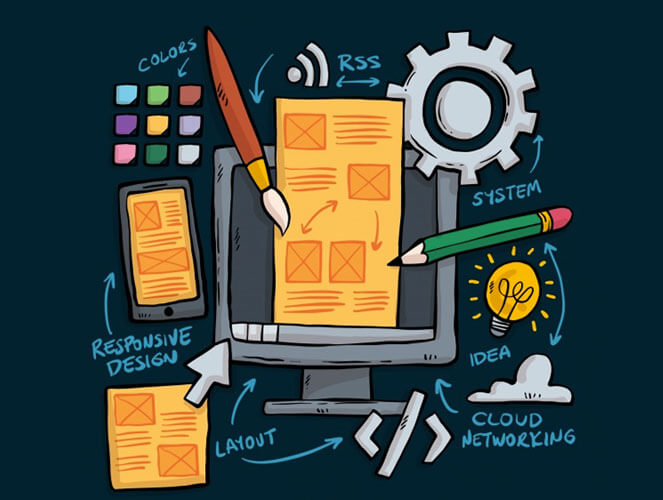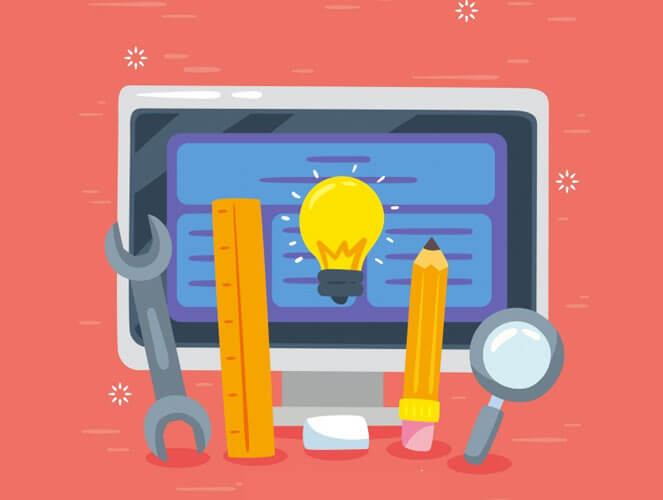As we explained in Chapter 2, there is no limit to the number of categories to segment your customers. You can categorize them by gender, pain points, occupation, income, job title, location, and so much more. You then have to write targeted, personalized emails for each audience segment.
Even if you had all 24 hours in a day all to yourself, you still wouldn’t have time to send personalized emails to everyone on your contacts list. We’ve touched on this point in this guide before, but it must be emphasized.
You’re trying to run a company and maybe even enjoy some personal time away from the job. You have to take care of yourself too.
How can you send personalized emails to each segment without foregoing your sleep? Well, marketing automation and email templates are the answer and the topic of this guide.
Let’s start by defining automated email templates.
An automated email template is kind of like a game of mad libs. With mad libs, you get a paragraph with certain words blanked out. These may be nouns, verbs, or adjectives. Your job is to come up with amusing words that fit those blanks to make your own unique prose.
The same concept applies to automated email templates. There is one key difference here.
Instead of trying to be funny or amusing, you’re trying to convert leads and get sales. The blanks in your email might be based on such details about the lead:
All these blanks can be generated and filled in by the email automation software. As long as your contacts information is accurate, the emails essentially write themselves.
Because these emails are written automatically, there might be concerns of them being too mechanical or "devoid of soul". However, these emails are far from stiff or robotic. They can be as creative and enticing as you want. With email templates, you can decide what kind of copy you’d prefer in your automated emails. You can even customize the copy of these emails to craft a perfectly targeted message. Once the blanks are filled in, simply set up a sending schedule and the emails are sent automatically to the leads' inboxes.
First, you’re not sitting there typing emails to everyone in your contacts list. That frees you up to go home, sleep, eat, and refresh yourself. Most importantly, you free up a lot of time to take up more marketing tasks.
You can also ensure that your emails go out exactly when they’re supposed to. For example, let’s say a customer in another country buys your product. Their time zone can be different from yours; it’s morning for them and the middle of the night for you. They don't know it, they just want a confirmation email as soon as they finish their purchase.
If you send the confirmation after you wake up, the transaction confirmation would be delayed. They might think something went wrong with their purchase or they lost their money. You don’t want to be up all night sending out such emails.
This is where automated templates are very useful.
Before you start to use email templates and email automation, you must know the function of each type of template. Let's explore the various types of automated email templates and the appropriate times to send them.
The following 10 types of automated email templates are the most common ones. Depending on your own company’s marketing needs, you may be able to identify fewer or more types. We’ll also delve into when you should send each template type.
Autoresponders are the instant emails your leads or customers get when they perform an action. These actions include signing up to an email list, buying a product, or registering for an event/webinar.
Obviously, these emails must arrive within seconds or minutes after the transaction is done. This way, the lead/customer can rest easy knowing that they've done the right transaction.
These are extremely repetitive emails. Their content doesn't need to be personalized beyond the first name and details of the transaction. The majority of the content in these confirmation emails would be the same for all customers. Since these are the lowest priority and highest frequency emails, it makes sense to write them once and reuse them by automation.
Fortunately, most email automation software have already written these emails for us to reuse. We just have to tweak them for our brand and start using them as autoresponders.
A welcome email is self-explanatory. It may arrive shortly after the autoresponder email. Essentially, you send this email once a lead gives you their contact information. We already touched on welcome emails in the first chapter of this guide.
A Welcome email includes a short message welcoming the new lead into your list. It is also advised to include some freebies and/or links to your best content as a welcoming gift.
A content upgrade is an opt-in form that promises free content upon signup. For example, when a visitor (i.e., a potential lead) is reading your blog, you’d give them valuable, free content that’s relevant to what they’re already reading about. You offer them a content upgrade in an opt-in form halfway down the page.
This is a great means of increasing the size of your email list. You will have to create several content upgrades based on the topics you write about most on your blog. The effort will be worth it once you see more leads on your email list.
Some companies take ages to acknowledge a problem that the customer has reported. Instead of making your customers wait, your company can send them an immediate, automated email acknowledgement.
It doesn’t need to be detailed or personalized. Keep the copy quick and short. You want to acknowledge the customer's complaint or query, and let them know someone will get back to them soon.
With a social email, you’re trying to get your subscribers to follow you on various social media platforms. The sooner you send this email, the better it is, according to marketing suite Sumo.
When they subscribe, the leads are generally hesitant. They’re doing their research about you. So, you might want to include a line or two about following you on social media in your welcome email. It provides a great way for the leads to see how a company interacts with its audience on social media.
The more they get to know you, the more they will trust you. The faster they trust you, the faster you can start selling them your products.
Bombarding them with purchase links won’t work as well as a social email (or a welcome email with social links) would.
Feedback emails are sometimes called question emails. That’s because you can use them to ask for feedback or other general questions as well. The other types of questions could be varied: a thought-provoking query about your industry or you want to know more about the needs of your customer. Many companies use question emails as feedback emails to gain insights into the leads' needs and their purchase process.
These emails must capture information at the most personal level, only then the insights would be of any use to marketers. Also, customers tend to ignore feedback emails because it doesn't give them anything helpful, only takes their time.
Hence, these emails must be the most personalized ones. You can still use an email template, but you’ll be filling in a lot more blanks than usual.
Feedback is an invaluable part of growing your company; you can't grow if you don't listen to your customers. It’s worth taking the time to get feedback, even if you have to put a little more effort into these emails.
Once your lead becomes a customer and buys your product/service, you should send them a review email. You must time it a bit away from the date of purchase to give the customer enough time to use your product/service and form a credible opinion. So this email may go out days, weeks, or even a month after the purchase, depending on the type of product/service sold.
With automation, you can schedule when to send these emails.
You’re asking for a customer to leave a review on the product or service they bought and used. You want to make it as simple as possible for them to do so. In your email, provide a link or a button taking them right to your Reviews section.
Like feedback emails, reviews are also, often, last on the priority of customers.
If you’re hosting a webinar or speaking at an event, you would want your customers to sign up for it. This is when registration emails are useful.
As a recap from Chapter 1, registration emails need to be clear with short, crisp copy. Use this email to tell the customer exactly what they’re in for. Your copy can be benefits-focused, but don’t overdo it on the length.
In this case, adding buttons to your emails instead of links is recommended; the buttons will stand out. You might even add two buttons to the same registration link: one at the top of the email and another towards the bottom.
If you’ve just made an app or released a new program, you expect your customers to use it. You can send one of these automated emails to your customers asking them to try out your new program or your app, before it is released to the public.
You don’t have to be too salesy in your copy. Your customers have already tried and loved your products / services. They’re probably willing to give your app a try, especially if it’s free. Make sure to include a download link or button in your email.
This is a great way to beta test your new program/app with your existing clients. They already like your products, so there will be minimal resistance to your trials. Use these trials to collect feedback and improve your program/app.
If a customer found that he could get a 10% or 20% discount right off the bat just for signing up, he would find it hard to resist. That’s what marketers are hoping for.
The last automated email template you might send out is the discount email. This also came up in the first chapter of this automated email marketing guide. Discount email templates can be a little different,though.
If you want to balance out your product reviews, be sure to personalize the emails to attract positive or neutral reviews.For instance, you can use a template opt-in form that promises a discount upon signup. When the customer gets your confirmation autoresponder or welcome email, they receive the coupon code as well.
Email templates and email automation help you send the right emails to your various customer segments at just the right time. They also allow you to manage your personal life and maintain your health. No human can sit at their computer round-the-clock. With email templates and automation, there’s no need to.
From autoresponders to registration emails, content upgrades and support emails, there are plenty of email templates you can use. We recommend that you use each of these 10 email types for the perfect customer service experience.


